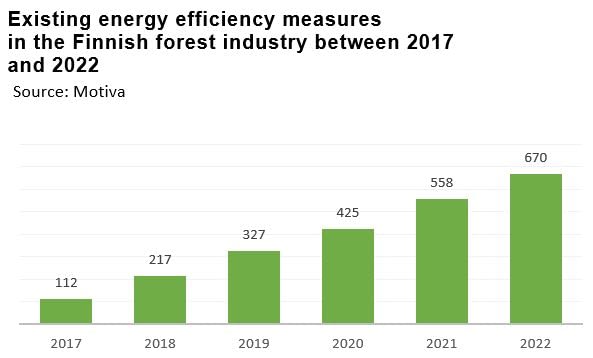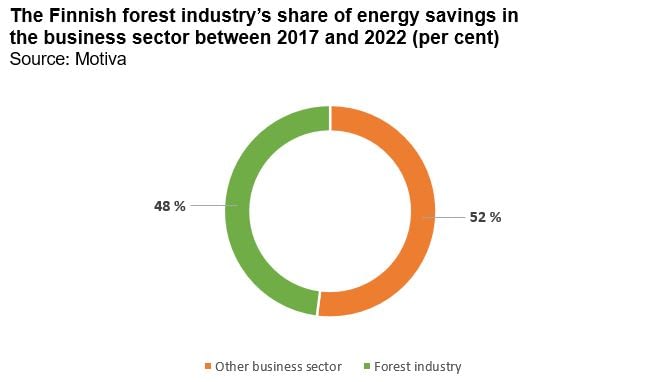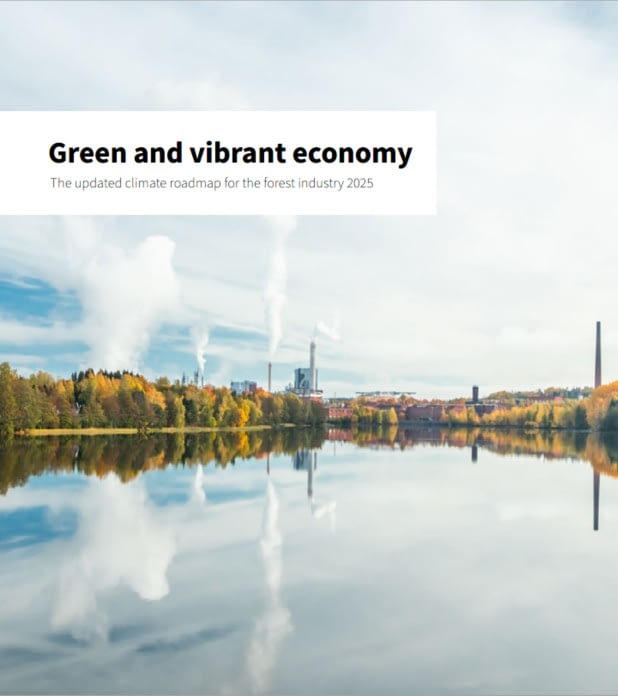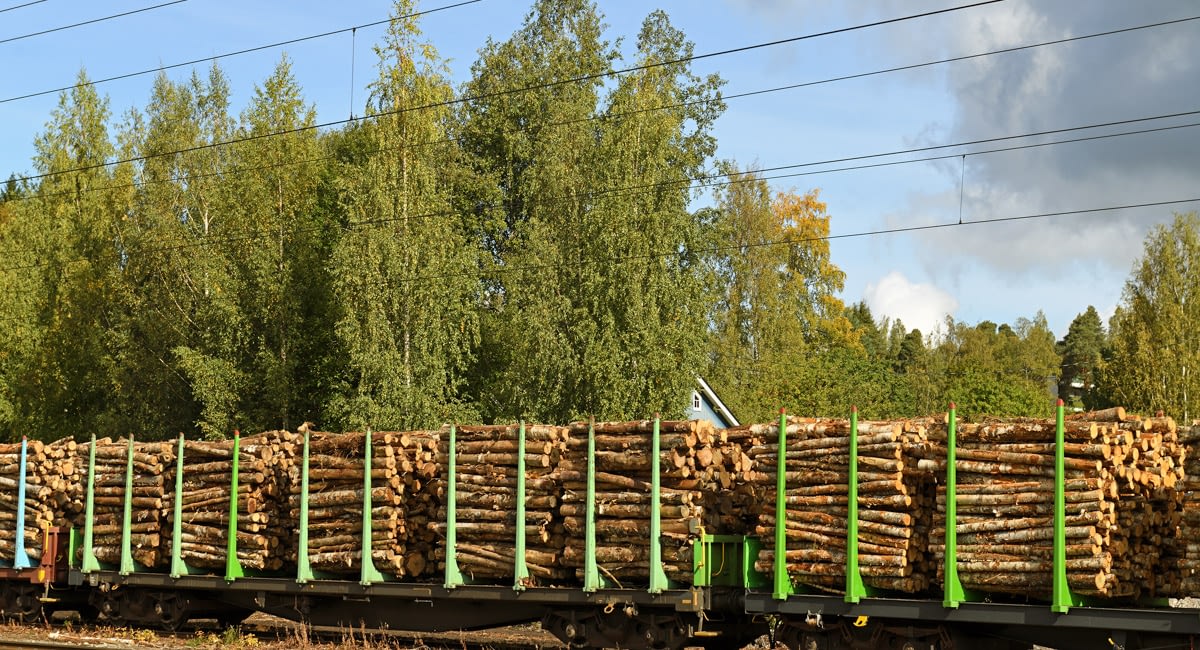1. Finnish forest industry mills saved a total of 720 gigawatt-hours of energy in 2022.
The annual savings of around 720 GWh are significant. This means that every day, an average of 1.97 GWh of energy has been saved, corresponding to the annual energy consumption of 106 single-family houses per day.
When business is going well and the economic outlook looks good, companies are able to invest in energy efficiency. The last few years have been exceptional in many ways. The year 2021 was challenging globally due to the pandemic. In 2022, the Russian war of aggression turned the energy market upside down. However, the number of energy efficiency measures has remained at the usual level.
On average, the Finnish forest industry has achieved energy savings of about 800 GWh each year over the last decade, although the average is increased by the exceptional peak in energy savings in 2017.
Energy efficiency is a competitive asset for the mill.
The exceptionally impressive energy savings of the year 2017, amounting to about 2,000 GWh, are explained by some large-scale investments. The largest of them was the renewal of an entire mill, which led to a significant leap in energy efficiency.
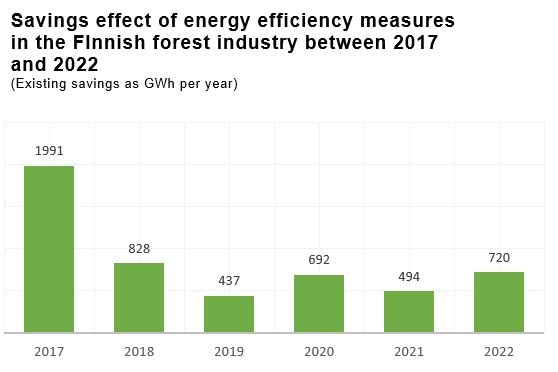
Production in the forest industry requires a great deal of energy, making energy efficiency a competitive asset for the companies. Therefore, forest industry mills invest in solutions that help reduce energy consumption and continuously develop energy efficiency. The ongoing energy crisis has pushed up the price of energy, which increasingly encourages companies to improve their energy efficiency. However, uncertain future prospects may affect companies’ willingness to invest.
2. In total, 112 investments and other individual development measures to improve energy efficiency were made in the Finnish forest industry mills in 2022.
On average, Finnish forest industry companies implemented 9–10 energy efficiency improvement measures per month. A similar pace of development has been going on in Finland for more than ten years. Forest industry mills have, on average, reported one energy efficiency measure or investment every three days.
What actions have been taken to save energy? The top three energy efficiency measures in the Finnish forest industry are:
– Enhancing the production process of the mill, for example by developing automation.
– Improving the efficiency of energy production itself, in other words energy efficiency improvements in energy production units.
– More efficient use of steam, such as using heat recovery to reduce the amount of steam wasted.
The effects of an investment or other act to improve energy efficiency at mills are rarely short-term. On the contrary; improving the energy efficiency of a production process, for example, will continue generating energy savings several years from now.
3. The forest industry accounts for about 50% of the energy savings implemented by the Finnish business sector in 2017–2022.
The forest industry has accounted for about 50% of the energy savings in the Finnish business sector during the current agreement period. However, the amount of energy savings varies considerably between and within sectors every year.
Finnish forest industry companies are also extensively involved in energy efficiency agreements and monitoring. During the current agreement period, energy efficiency is pursued by 32 forest industry companies across 121 locations.
In total, 540 companies from the Finnish business sector are involved in energy efficiency agreements. In addition, 178 real estate companies and 134 cities, municipalities and joint municipal authorities are aiming for energy savings in Motiva’s project.
Efficient use of energy reduces the CO2 emissions that cause climate change.
Energy efficiency agreements are an important part of Finland’s energy and climate strategy and the primary means of promoting the efficient use of energy. Sustainable and efficient use of energy reduces the CO2 emissions that cause climate change.
In 2022, the forest industry’s share of the Finland’s energy savings implemented by the business sector was still substantial.
4. The Finnish pulp mill is among the best in Europe in terms of energy efficiency.
In chemical pulp production, the Finnish pulp mill is significantly more energy efficient than the EU average. Less than 10 GJ of electricity and steam are used per tonne produced at a Finnish pulp mill, while the EU average is almost 11 GJ.
The energy efficiency of Finnish mills is largely explained by the fact that the mills are modern and the companies have invested in their energy efficiency. A significant share of Finnish mills that are so-called integrates produce not only pulp but also products derived from pulp, such as paper and paperboard. Thus the heat flows of pulp production and the heat from energy production can be utilised in the paper and paperboard mills. A great deal of the energy used by the mills is renewable, making the energy production efficient and environmentally friendly.

5. The energy efficiency of Finnish paper and paperboard mills is also at a good level in the EU comparison.
The energy efficiency of Finnish paper and paperboard mills is at least as good as the EU average. According to an analysis by the consulting company Fisher International, Finnish mills are large, efficient, and modern compared to mills in other EU countries.
The energy efficiency of Finnish paper and paperboard mills is even surprisingly good when the result is assessed in relation to the characteristics of Finnish production: Finnish mills are located further north than other European mills, which is why we have higher heating needs. However, this does not make our average energy consumption higher than other EU countries.
Furthermore, in Finland, more virgin raw materials are used in the production of printing paper, notepaper, and packaging board, and the virgin materials are produced by the same mill. Their further processing into paper, for example, consumes proportionally more energy than, for example, processing the once-dried market pulp.
Integrated mills introduce efficiency gains.
However, Finnish integrated mills introduce efficiency gains. The heat flows generated in energy production can be better utilised, and the pulp does not need to be separately dried and transported elsewhere.

In the article, the sector and programme-specific energy saving figures from the Energy Efficiency Agreement for Industries were used for the forest industry figures, where applicable.
